Despite frigid temperatures in Detroit, Michigan, the Cobo Center heated up with hot new vehicles as the North American International Auto Show (NAIAS) or more popularly known as the Detroit Auto Show kicked off the 2017 calendar year.
What started out as a local dealer and industry preview, NAIAS has now become an internationally significant event to show what carmakers have in store for the year and beyond. As always there was plenty to go around so selecting stand out cars that came out of The Motor City is no easy feat. Still, someone’s got to do it and so without further ado, here are the 7 standout cars from the 2017 NAIAS.
1. Chevrolet Traverse
Chevrolet took the wraps off its all-new 7-seater mid-sized crossover, the Traverse. Boasting a more refined styling, the 2018 Traverse delivers best-in-class third-row legroom, maximum cargo room, and passenger volume together with an enhanced set of safety features.
Inspired by Chevrolet’s bigger SUVs, the Traverse gets premium styling cues such as chrome accents, LED signature lighting, and LED headlights. For those who have an allergy to chrome trim, the RS package swaps out the shiny bits for blacked-out ones such as in the grille, bowtie badge, and 20-inch alloy rims.
Performance for the 2018 Traverse is delivered by Chevrolet’s 3.6-liter V6 that offers 10 percent more horsepower than the current model (about 317hp). For the RS, a 2.0-liter turbo-4 provides more torque than the V6 (more than 366Nm). Both engines are paired with a 9-speed automatic.
2. Kia Stinger
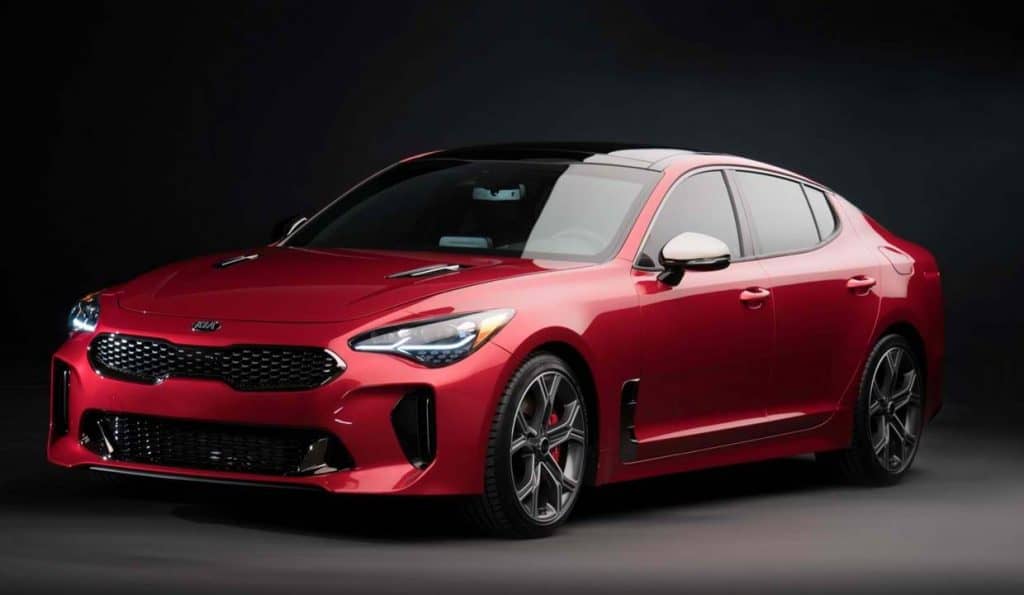
The Stinger is a sports sedan. Still, it manages to fulfill the premise which was to build the sportiest Kia ever. Roughly the same size as the midsized Optima sedan, the Stinger shows off Kia’s new corporate look. Overseen by Peter Schreyer, there’s plenty to go by from the slimmed up tiger-nose grille to the hood vents to the side vents and sharp sills carving up the sides. At the back, the trunk curves upward turning into an integrated spoiler while a full-length diffuser envelopes the four oval tailpipes. The rear does look somewhat like a Maserati, but the world could use more Maseratis, right?
Dubbed a GT or gran turismo, the Stinger is Kia’s first-ever rear-wheel drive sedan. However, it will be offered with an optional all-wheel drive fitted with a brake-based Dynamic Torque Vectoring Control. The Stinger gets a chassis made of 55 percent advanced high-strength steel. It’s tweaked by former BMW engineer Albert Biermann. The Stinger also gets Kia’s first-ever electronically adjustable suspension known as Dynamics Stability Damping Control while a variable-ratio rack-mounted motor driven power steering offers razor-sharp feedback.
Power comes from a turbo 2.0-liter boasting 255hp and 352Nm of torque. Higher-end models get a twin-turbo 3.3-liter V6 with 365hp and 510Nm of torque. The 100-km/h mark arrives in 5.1 seconds while top speed is 270 km/h for the V6. Mated to the engine is Kia’s second-generation 8-speed automatic.
The Stinger promises to be Kia’s highest-performance production vehicle and will dabble in a segment populated by European automakers.
3. Lexus LS
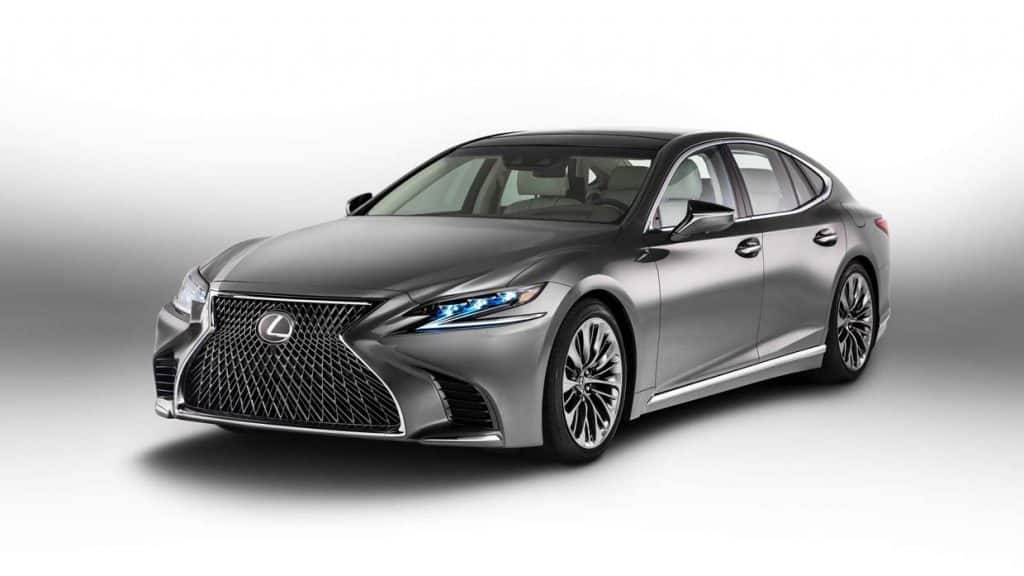
The fifth-generation Lexus LS reflects a strong, uniquely Japanese identity and approach to luxury. With Omotenashi or the Japanese concept of hospitality as the guiding principle, the LS has a luxurious cabin that truly welcomes and envelops the occupants. It starts with an organically-shaped dash design that clusters information at a uniform height to emphasize ease of use. At the same time, the seats feature up to 28 points of movement with heating, cooling, and massaging functions built-in. Designers also turned to Japanese culture reflected in the interior ambient lighting inspired by Japanese lanterns and armrests that appear to float next to the door panel.
For both high power and excellent fuel efficiency, Lexus designed an all-new twin-turbo 3.5-liter V6. The new LS engine offers the output one would expect in a flagship sedan: 415hp and 599Nm of torque. The first-ever 10-speed automatic in a premium sedan, having already debuted in the Lexus LC 500, is also used in the new LS. It’s a torque-converter automatic, yet with shift times that rival those of dual-clutch transmissions.
The new platform debuted in the LC 500 coupe and now, with a longer wheelbase, underpins the new LS.
4. Subaru WRX, WRX STI
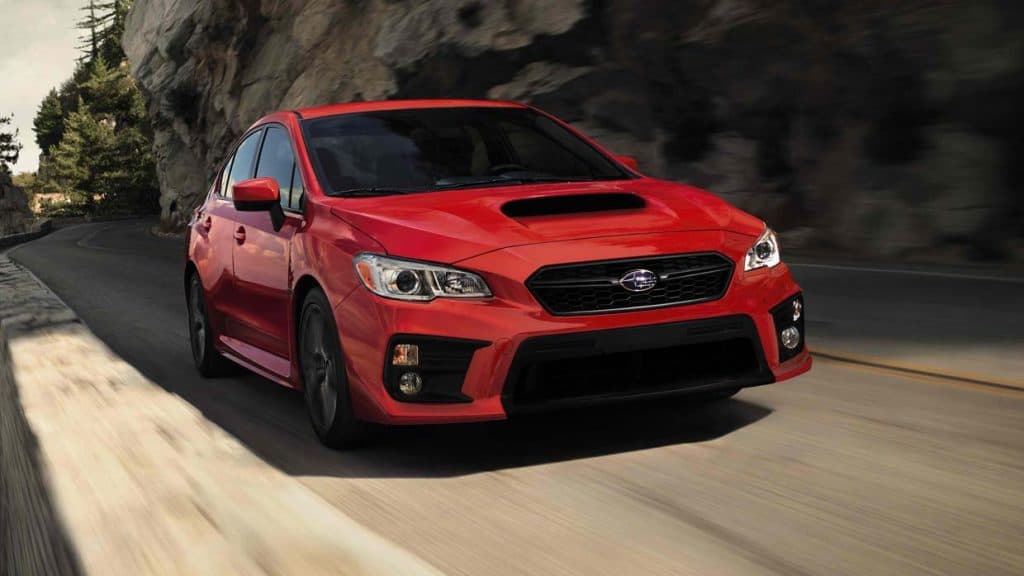
As the defining symbol of Subaru’s sport performance, the WRX and its hotter sibling, the WRX STI have been enhanced to deliver improved steering stability and a flatter, more comfortable ride.
Meanwhile, the WRX STI’s DCCD (Driver’s Control Center Differential) AWD system has been changed from a mechanical/electronic hybrid set-up for its limited slip differential to a fully electronic one. This enables the WRX STI to respond quicker and smoother to the driver’s intentions.
Apart from changes to its suspension, the WRX and WRX STI also offer better braking. The WRX gets Jurid brake pads peering out of the red-painted brake calipers while the WRX STI benefits from new Brembo performance brakes with 6-piston front and 2-piston rear calipers with drilled rotors all around. The Brembos are identifiable thanks to its yellow calipers.
Together with the changes to its undercarriage, both the WRX and WRX STI feature a restyled front fascia that show off a sportier attitude. This includes a redesigned LED headlight cluster, a more pronounced hexagonal grille, and a larger lower grille opening.
Inside, both models get a slew of interior refinements that include new door switch paneling, rear seat armrests with cup holders, redesigned interior door grips, and a faster remote trunk opening. There are also countermeasures against unwanted NVH such as thicker door glass, door sealing, and a foam-filled windshield header beam.
5. Toyota Camry
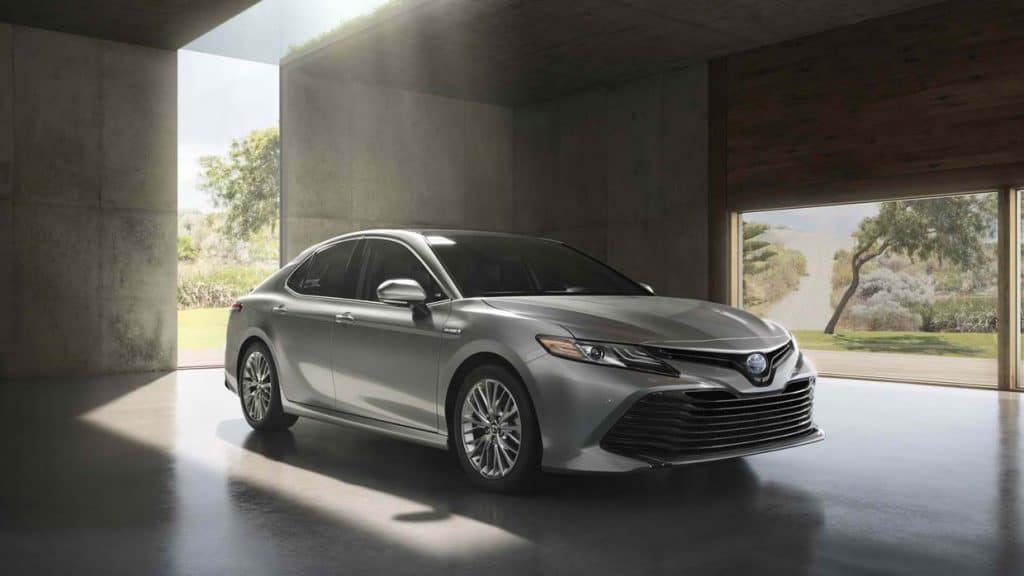
If there’s one constant criticism leveled against the Toyota Camry is that it’s the automotive equivalent of vanilla ice cream. Though it’s been stylistically been more aggressive in the past few generations, try as Toyota has, it’s still a bit dull behind the wheel. Well, that’s all about to change as the Camry migrates over to the Toyota New Global Architecture (TNGA) which is poised to inject some driving fun into Toyota’s executive sedan.
Thanks to the revised placement of drivetrain components, TNGA allows the Camry to have a lower center of gravity. They have also lowered the occupant hip points thereby reducing the overall height as well. TNGA has not only lowered the overall height, but the hood line while lengthening the Camry’s wheelbase by around 50mm. Of course, all this lowering has affected the Camry’s silhouette. The “Keen Look” design philosophy is in full effect here and can be seen in the 2018 Camry’s aggressive styling and strong stance.
Inside, the driver and front passenger are treated to an unprecedented sense of outward visibility thanks to the more compact design of the instrument panel and lower belt line. Meanwhile, the dashboard itself is canted more towards the driver containing a mix of tones and materials that enhance ergonomics.
Matching the chassis increased handling and performance capability, Toyota has engineered TNGA-inspired all-new drivetrains beginning with a 2.5-liter 4-cylinder Dynamic Force Engine (205hp, 250Nm). A 3.5-liter V6 with D-4S direct fuel injection and a gasoline-electric hybrid complete the line-up. Both normally-aspirated engines come with 8-speed automatics.
6. Volkswagen Tiguan Allspace
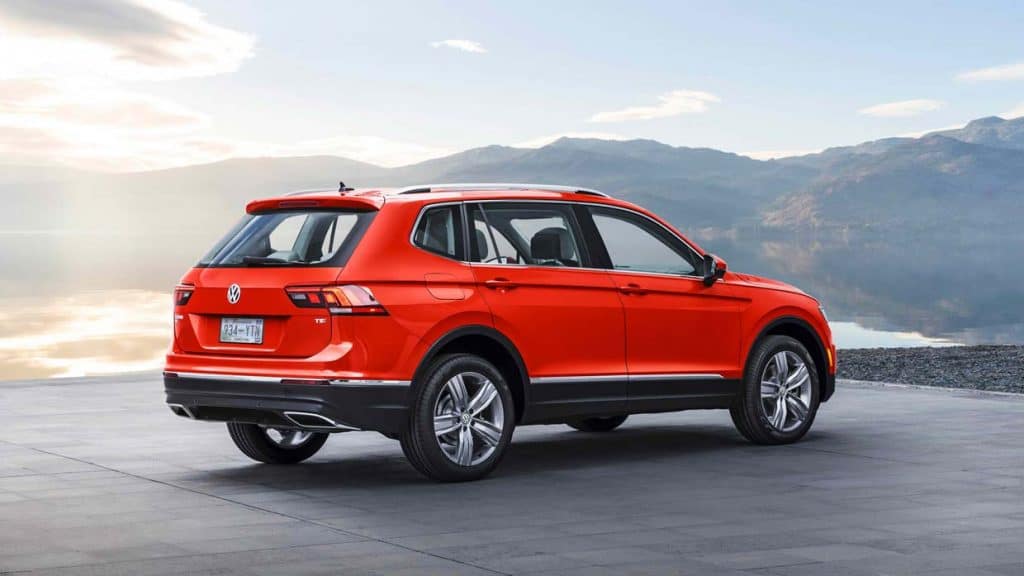
Volkswagen is seriously playing the crossover game by offering a larger version of its Tiguan SUV. And get this: it comes with an optional third-row. Formally known as the Tiguan Allspace in Europe or simply Tiguan for the US, could this be the start of a Volkswagen renaissance.
With an insatiable demand for SUVs and crossovers globally, Volkswagen has shown the superiority of its MQB architecture on the Tiguan by stretching its wheelbase by a huge 110mm. The resulting Tiguan Allspace measures an additional 215mm longer than the standard Tiguan. The resulting stretch has managed to accommodate an extra 60mm of second-row legroom and a much larger cargo space of 1,770 liters (up from 730 liters) enabling engineers to fit an optional third row of seats.
The Tiguan Allspace carries the same design DNA that Volkswagen uses for its SUVs. However, it’s differentiated by the slightly altered hood and grille. The Tiguan Allspace also has a unique rear-end starting with the rear door handle onward. The side window in the D-pillar is larger as well.
On the business end, the Tiguan Allspace will be offered in three versions in Europe: Trendline, Comfortline, and Highline in both front and all-wheel drive. Three gasoline (TSI) and three diesels (TDI) will be available at launch. The gasoline will have power ranging from 150 to 220hp while the diesel will have anywhere between 150 to 240hp. All models will have the automatic dual-clutch transmission (DSG).
7. Ford Bronco and Ranger
The biggest announcement from the Blue Oval didn’t make a physical appearance in the Cobo Center, but was instead teasingly announced by Ford president Mark Fields.
Twelve years after Ford rumored the return of the Bronco, they have finally confirmed the news: it’s coming back to American showrooms in 2020. In the same breath, they’ve also announced the return of their midsized pickup truck on American soil: the Ranger. That one is arriving stateside in 2019. While it’s hard to fully understand why Americans excited over the Bronco and Ranger, what’s more important is what this means for the global Ranger and Everest.
Joe Hinrichs, Ford’s president of The Americas said in his speech: “Bronco will be a no-compromise midsize 4×4 utility for thrill seekers who want to venture way beyond the city.” This statement signifies two things: first that the US-bound Bronco is moving a size up from a small two-door SUV (it’s the precursor to the Explorer) to a mid-sized four-door SUV; second, that it’s going to be a ladder-on-frame SUV that’s going to be capable in all sorts of terrain.
It’s been reported that the Asia-Pacific Development Center in Australia, responsible for the current Ranger and Everest, is spearheading the Bronco’s development alongside the US-market Ranger.

